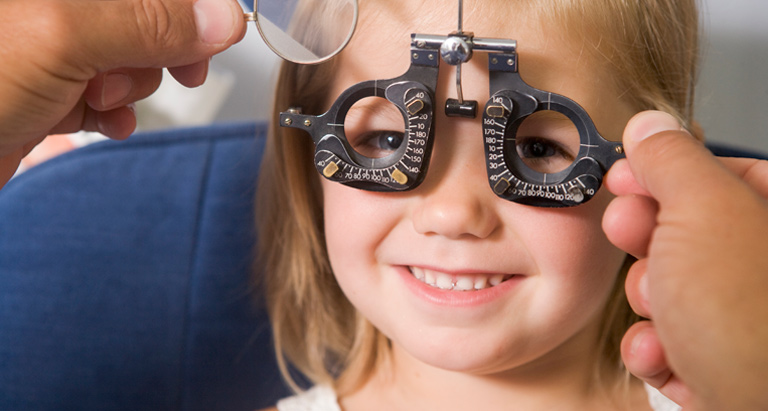Telling whether your child does or does not have eye problems is not easy. According to some experts, eye exams should be conducted when a child is undergoing regular checkups. These eye check-ups help to keep your child’s vision intact and also gives you (as the parent) important information about their eye health.
The eye health of children starts when they are newborns and needs to continue throughout the child’s adult life. While many children will do with regular eye checkup, children who have family history of eye problems or show symptoms of eye problems may require an official examination of their eyes.

If there is no family history or risk factor, a child needs get an eye checkup when he is six months old, 3 years old and before starting 1st grade.
Why is an Eye Exam Important?
Most states in the US require a child to undergo eye exam before he starts public school. Even if you go to your pediatrician and he does not see any problem, there might be other signs that will highlight your child’s need for a thorough eye examination.
Here are some of the symptoms that might indicate possible vision problems in a child:
- Poor performance in school
- The child does not want to go to school
- The child finds it hard to pay attention
- The child has difficulty writing and reading
- The child has trouble seeing the information written on a chalk board
- Double or blurry vision
- Eye pain or headaches
- The child takes longer than normal to complete homework
It is, therefore, important to include an eye exam in a child’s regular physical checkups. When it comes to eye specialists for your child, there are three types who can give your child vision and eye care:
An Ophthalmologist: This is a medical doctor who gives eye care like prescription of corrective lenses, eye exams, diagnosis and even treatment of eye diseases. An ophthalmologist can even perform eye surgery.
An Optometrist: This is a doctor who diagnoses common disorders associated with eyes, treats some eye diseases, prescribes corrective lenses and also gives eye exams. An optometrist can also perform eye surgery and treats complex diseases associated with the eyes.
An Optician: This is a doctor who assembles, fills, sells and fits eyeglass prescriptions.
What you Should Expect in an Eye Exam
The USA has national care standards or eye care of children. Here are the components involved in a child’s eye exam:
Eye inspection: The eye care provider will inspect the child’s eyelids and eyes, examine the child’s eye muscle motions, examine pupils and even the reflection of light from the back of the child’s eyes.
Ophthalmoscope: This is performed in older children. The eye care providers will examine the back of the child’s eye.
Testing the reflex of the corneal light: The eye care provider will use a small flashlight to look at the cornea. The light being reflected needs to have a sharp focus and be centered for both pupils. If the reflection is off-center or not clear, the results will be abnormal.
Cover testing: This is a test that detects whether the eyes are misaligned or not. The child will be asked to focus on one target, and then the examiner will cover one eye to see if there will be a shift.
Visual acuity test (age appropriate): With the help of an eye chart, the eye caregiver will ask that child to read out various character lines. Each eye will be tested separately.
Does Your Child Need Sunglasses?
Most researchers and doctors agree that children need sunglasses. Since children do spend most of their time outdoors in the sun, they are at a risk of suffering from eye problems like macular degeneration and cataracts.
As such, a child’s sunglasses should be able to block about 99% to 100% UVB and UVA. As for the sunglasses frames, go for plastic or wood framed sunglasses (like the ones available at 8wake) as they are not easily broken and are lighter.
